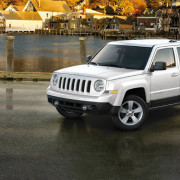WASHINGTON, Dec. 29, 2014 /PRNewswire-USNewswire/ — With the recent legalization of recreational marijuana use in Colorado, Alaska, Oregon, Washington and the District of Columbia, safety advocates are increasingly concerned that drugged drivers pose a very serious threat to the safety of American road users. New research from the AAA Foundation for Traffic Safety found that nearly half of Americans share this concern and report feeling that drug-impaired drivers are a bigger problem today compared to three years ago. With 85 percent of Americans supporting marijuana-impairment laws, the survey reveals that while there’s awareness of this serious issue, Americans are unclear on impairment thresholds, safety implications and legal ramifications.
“While all states prohibit driving under the influence of drugs, there’s significant variation in the minimum acceptable levels of marijuana or its traces in a driver’s system,” said Peter Kissinger, President and CEO of the AAA Foundation for Traffic Safety. “Sixteen states forbid any presence of prohibited drugs, while five others have specific limits for marijuana. With a lack of uniformity, it’s no surprise we found that more than half of American drivers are unaware of the laws that exist in their state.”
The Foundation’s annual Traffic Safety Culture Index also revealed that, compared to alcohol, American drivers are significantly less concerned about the threat of drug impairment behind the wheel. The survey found that while two-thirds feel that those who drive after drinking alcohol pose a “very serious” threat to their personal safety, just over half feel the same way about drug use. In fact, one-in-six Americans report that, where they live, most people feel it’s acceptable to drive one hour after using marijuana.
“Federal government research suggests that marijuana can impair driving performance for up to 3 hours,” warned Kissinger. “Decreased car handling performance, increased reaction times and sleepiness have all been documented driver impairments that result from marijuana use.”
When it comes to prescription drug use and driving, Americans report feeling even less concerned, with just over a quarter reporting feeling the same “very serious” threat to their personal safety. However, many of these drugs, along with over-the-counter medications, can impair a driver in similar ways as alcohol. Previous studies have found that a single dose of some cold and allergy medications can have the same effect on driving as being above the legal limit for blood alcohol concentration, and certain antidepressants have been shown to increase crash risk by up to 41 percent.
“Just because a doctor prescribes a drug, or you can purchase it over-the-counter doesn’t necessarily mean it is safe to use while driving,” says Jake Nelson, AAA’s Director of Traffic Safety Advocacy. “Always discuss potential side effects and interactions with your doctor or pharmacist before getting behind the wheel.”
To educate drivers on the impact that prescription and over-the-counter drugs can have on safe driving ability, the AAA Foundation developed RoadwiseRX – a free, interactive tool that allows users to input various medications and check for side effects and interactions that can lead to driver impairment.
Each year, the AAA Foundation for Traffic Safety surveys Americans ages 16 and older about their driving behaviors and attitudes. The goal of this annual Traffic Safety Culture Index is to foster a social climate in which traffic safety is highly valued and rigorously pursued.
Established by AAA in 1947, the AAA Foundation for Traffic Safety is a 501(c)(3) not-for-profit, publicly-supported charitable educational and research organization. Dedicated to saving lives and reducing injuries on our roads, the Foundation’s mission is to prevent crashes and save lives through research and education about traffic safety. The Foundation has funded over 200 research projects designed to discover the causes of traffic crashes, prevent them and minimize injuries when they do occur. Visit www.aaafoundation.org for more information on this and other research.
As North America’s largest motoring and leisure travel organization, AAA provides more than 54 million members with travel, insurance, financial and automotive-related services. Since its founding in 1902, the not-for-profit, fully tax-paying AAA has been a leader and advocate for the safety and security of all travelers. AAA clubs can be visited on the Internet at AAA.com.
Logo – http://photos.prnewswire.com/prnh/20080226/DC15031LOGO
SOURCE AAA
RELATED LINKS
http://www.aaafoundation.org
http://www.aaa.com/




